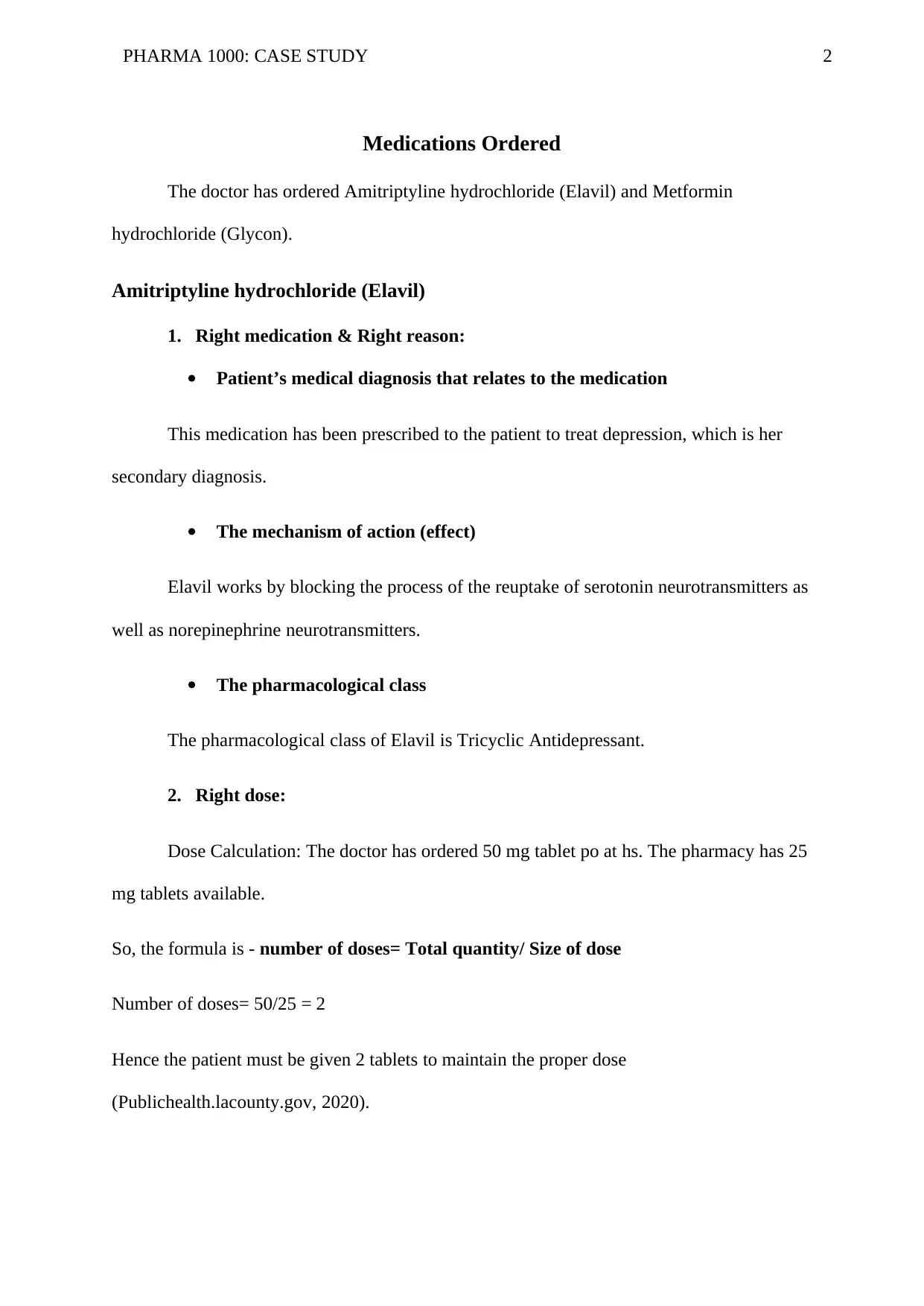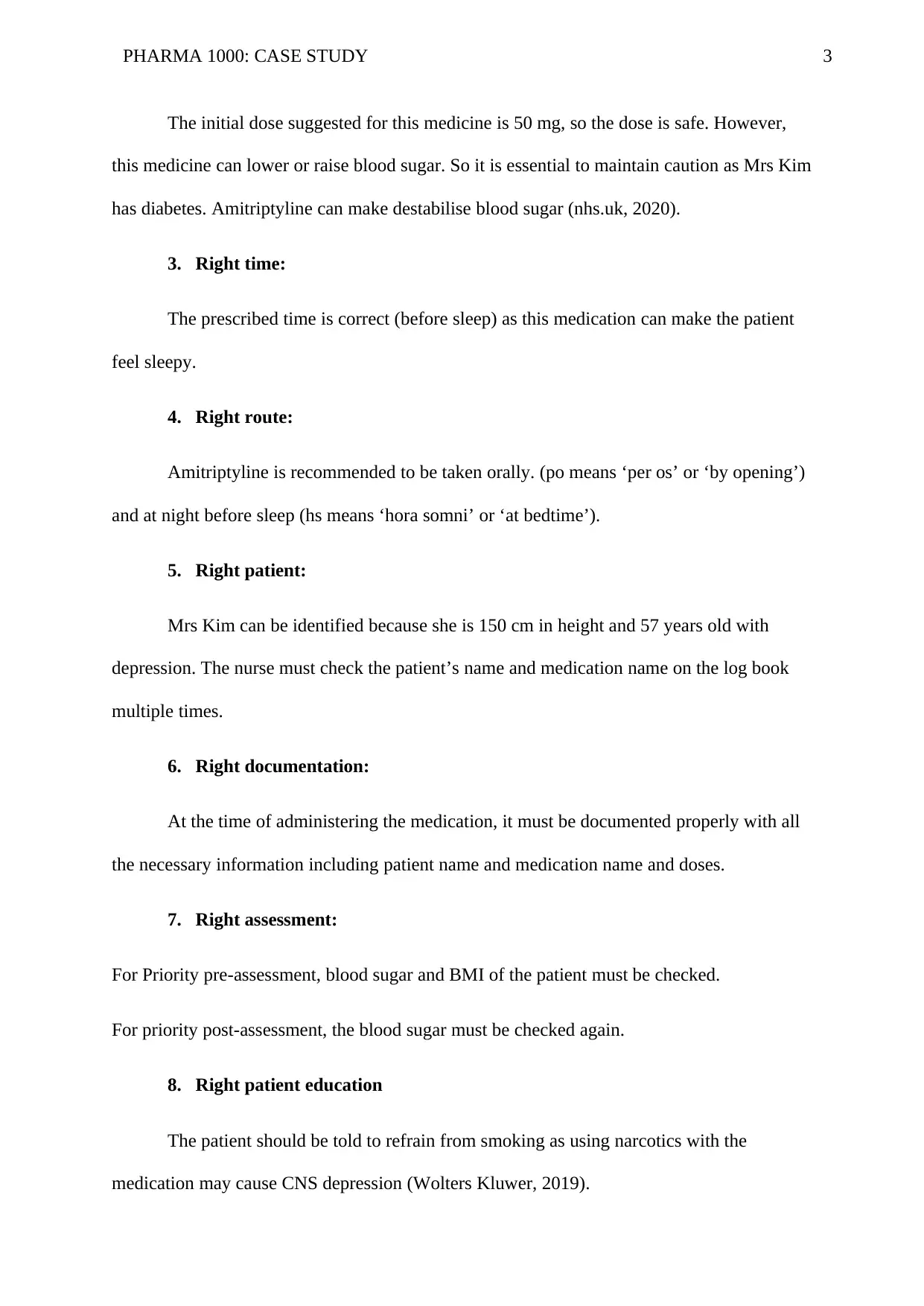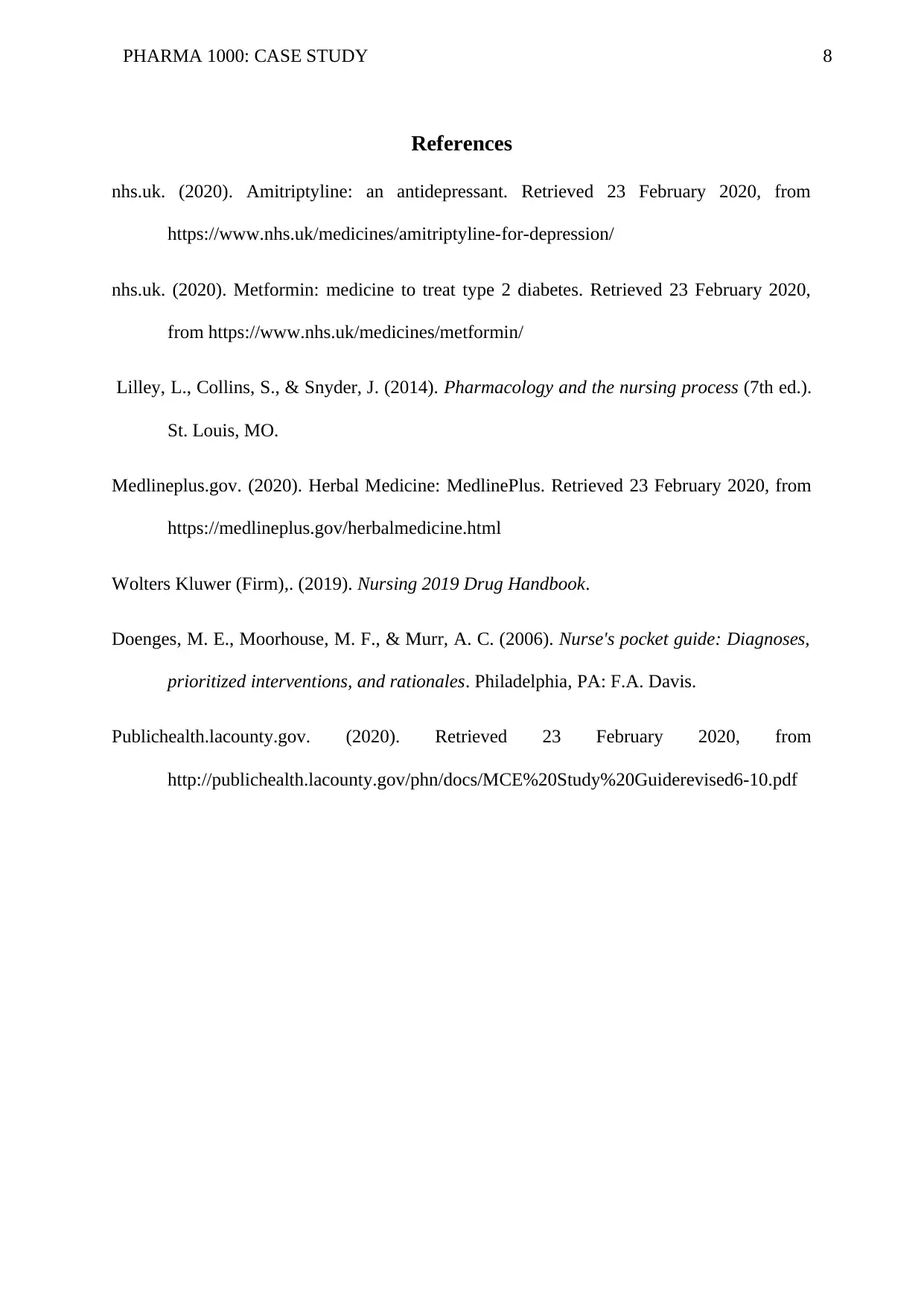PHAR 1000 Assignment Practical Nurse PHAR 1000 Assignment: Case Study (25% total) Read all of the instructions before you begin. You may complete this assignment individually or with a partner. Purpose: This assignment provides the opportunity for students to apply pharmacology knowledge. You will be assessed on how you apply an understanding of the following general learning outcomes: • Examine medication measurements using various systems of measurements (amount/quantity) • Examine selected herbal medications, including their effects, side effects, and interactions with other drugs • Examine nursing implications and responsibilities related to medication administration Instructions • Read the case study (p. 2) and answer the following questions based on the rights of medication administration. o For each medication ordered clearly identify the following ?
![[object Object]](/_next/static/media/star-bottom.7253800d.svg)
![[object Object]](/_next/static/media/star-bottom.7253800d.svg)







